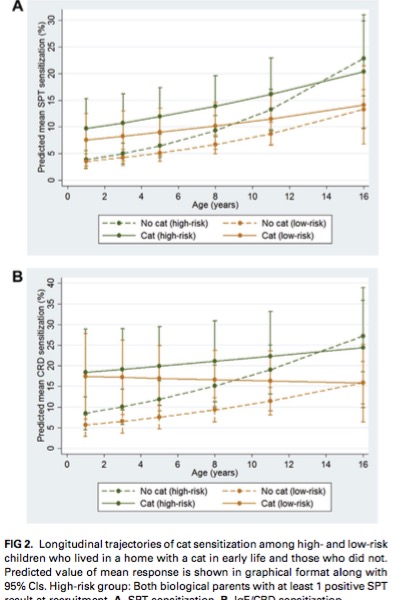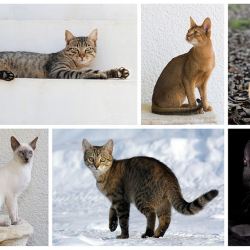Allergic reactions to cats are caused by immune system responses to the animals' saliva, urine or skin, and can result in myriad symptoms, ranging from hives and wheezing to skin wheals, teary eyes, and stuffy sinuses. Cats are the most frequent source of pet-related allergies — much more than dogs, for example. Your cuddly kitty produces multiple proteins that can cause allergic reactions in people. Investigations into the possible allergy-causing cat exposure have produced some conflicting results, with some finding that exposure to cats early in life is more likely to cause sensitization in those exposed, while others find that exposure later in life is protective. Dr. Healson Ihuoma from University of Manchester and colleagues sought to clarify the relationship )1)between the timing of exposure and sensitization.
They used data from about 1000 children, noting who had a cat at home and whether a child was at high risk of developing an allergy because one or both parents had allergies. The investigators tested for IgE antibodies and skin prick tests (SPTs) formed in reaction to several cat-specific proteins (Fel d 1, Fel d 2, and Fel d 4). These tests were run when the children were 1, 3, 5, 8,11 and 16 years old. The results of these tests were used to derive predictive equations for the relationships between age of exposure and sensitization to the various proteins.
What they found was that early sensitization (i.e. having a cat) initially resulted in a greater degree of sensitization early in life, but by the time a child reached their teen years, the level of sensitization was similar, as shown in the graphs below of the responses of SPTs and IgE. These patterns were similar for both low- and high-risk individuals. 
Similar patterns were found with respect to cat allergens Fel d 1,2, and 4. The responses of the high-risk children were greater than those of low-risk children initially, but the rate of change in sensitization was similar.
The authors noted
Our findings highlight the changing nature of the association between early-life cat exposure and specific sensitization during childhood and the key role of the time of assessment of outcomes. These results can explain most inconsistencies in the previous literature.
They continued that the reason for conflicting results of cross-sectional studies (those done at just one time point) can be explained by the differing trajectories of sensitization to cat antigens in those who did and did not own cats from early ages.

